BODAR Özbekistan Orman Bakanına (Devlet Orman Komitesi Başkanı) sunuldu-23 Eylül 2019
Bozuk Ormanların ve Diğer Alanların Restorasyonu Projesi yazımı işi kapsamında 23 Eylül 2019 Pazartesi önce FAO Özbekistan ofisi ziyaret edilmiştir. https://coin.fao.org/cms/do/en/office.html?officeCode=FEUZB
| Monday,
September 23, 2019 |
10.00 -11.00 | Meeting at FAO Partnership and Liaison Office in Uzbekistan | FAO office |
| 11.00 – 12.00 | Meeting with State Committee of the Republic of Uzbekistan on Forestry | State Committee Office | |
| 14.30 – 16.30 | Stakeholder Workshop to obtain feedback on proposed works and agreement on the pilot sites (At the Committee premises) | State Committee Office |
FAO Özbekistan Ofisinde;
- Alisher Shukurov- FAO Temsilci Yardımcısı (Assistant FAO Representative- FAO Representation in Uzbekistan) – alisher.shukurov@fao.org,
- Olimjon Kakhkharov- FAO Proje Koordinatörü (Project Technical Coordinator FAO in Uzbekistan) olimjon.kakhkharov@fao.org, Alim-ok@yandex.com ile görüşülmüştür.
Bu görüşmenin ardından programa uygun şekilde “Özbekistan Cumhuriyeti Devlet Ormancılık Komitesi- The State Committee on Forestry of the Republic of Uzbekistan) ziyaret edilmiş ve Komite Başkanı Nizomeddin J. BAKİROV başkanlığındaki heyetle görüşülmüştür.
Özbekistan Devlet Yapısına göre Cumhurbaşkanlığı ve Başbakanlıktan sonra Bakanlıklar ve Devlet Komiteleri gelmekte olup, Komite Başkanları Bakanlarla aynı statü ve yetkiye sahiptir. Aynen Bakanlar da olduğu gibi doğrudan Cumhurbaşkanı tarafından atanmakta ve hesap vermektedir.
Devlet Ormancılık Komitesinin web sayfası www.forestry.uz dur.
Komite Başkanı Birinci Yardımcısı Xakimov Olim Arizikulovich (First Deputy Minister for Economic Affairs of the State Committee for Forestry of the Republic of Uzbekistan) ve Departman başkan ve yardımcıları da iştirak etmiştir.
Bu toplantının ardından öğle yemeğinde müzakerelere devam edilmiş, öğleden sonra ilgili uzmanların katılımı ile detay konular görüşülmüştür.
Bu görüşmelerde esas alınan belgeler şunlar olmuştur:
1- Bozuk Ormanların ve Diğer Alanların Restorasyonu Projesi Konsept Notu BODAR Konsept Notu-Onaylanan-Düzenlenen-14 Eylül 2019
2- Türkiye-Özbekistan Ormancılık İlişkileri: OGM-Özbekistan Bilgi Notu (1)
3- FAO’ nun Ülke Notu: Draft CPF of Uzbekistan-FAO Ülke Programı 2018-2022
Önemli ağaç türlerinden olan Saksaul (Haloxylon ammodendron)
Görüşmelerde teşkilatın yeniden yapılanması, Aral gölü ağaçlandırma çalışmaları, kavakçılık, fıstık, badem, tohum depolanması, fidancılık gibi konular müzakere edilmiş olup, 24 Eylül 2019 tarihinde yapılacak arazi gezisini takiben karar verilmesi teklif edilmiştir.
Özbekistan hakkında güncel bilgiler adresinden alınabilecektir. Ayrıca aşağıdaki projelerin yürütüldüğü ifade edilmiştir.
| Uzbekistan | Sustainable Management of Forests in Mountain and Valley Areas | GEF 6
|
https://www.thegef.org/project/sustainable-management-forests-mountain-and-valley-areas |
| Uzbekistan | Sustainable Natural Resource Use and Forest Management in Key Mountainous Areas Important for Globally Significant Biodiversity | GEF 6
|
https://www.thegef.org/project/sustainable-natural-resource-use-and-forest-management-key-mountainous-areas-important |
| Uzbekistan | Reducing Pressures on Natural Resources from Competing Land Use in Non-irrigated Arid Mountain, Semi-desert and Desert Landscapes | GEF 5
|
https://www.thegef.org/project/reducing-pressures-natural-resources-competing-land-use-non-irrigated-arid-mountain-semi |
Bunlardan özellikle “Sustainable Management of Forests in Mountain and Valley Areas” projesi ile BODAR’ ın yakın ilişkisi olduğu ifade edilmiştir. 3 milyon doları GEF hibesi olmak üzere toplam 22 milyon Dolar bütçesi olan bu proje ile işbirliği tarafımızca da uygun görülmüştür. Ancak karar bilahare verilecektir.
Bu proje metninde Özbekistan ormanları ve ormancılığı ile ilgili son bilgiler verilmiştir.
The Republic of Uzbekistan is a Central Asian country that borders Kazakhstan, Kyrgyzstan, Tajikistan,
Afghanistan and Turkmenistan. Its total area is 447,400 km2 . Approximately four-fifths of Uzbekistan
is occupied by desert plains; although the eastern and southeastern areas of the country include
mountains and the foothills of the Tien Shan and Pamir-Alai mountains. The climate is characterized
by continental and subtropical conditions. In the lowlands the minimum annual precipitation is 80 –
90 mm. However, rainfall generally increases with elevation in the east and southeast, and in some
places it exceeds 890 – 1,000 mm per year. Most areas experience large diurnal and seasonal
variations in temperature.
According to the World Bank, the population in 2013 was 30.24 million and the GDP per capita was
$1880 (using Atlas method, in current US$). GDP growth per annum averaged over 8% during 2011 –
2014, and was expected to continue at similar rates. Notwithstanding, Uzbekistan faces important
socio-economic challenges with 13.7% of the population living below the national poverty line. The
poverty line currently used in Uzbekistan is based on the cost of a food basket that guarantees a
minimum calorie intake of 2,100 kilocalories per person a day. Over 60% of the poor live in rural areas
and, while declining, rural poverty remains higher than urban poverty (17.3% rural, 10.6% urban in
2013). Official statistics on poverty which are disaggregated by sex (and cross-tabulated by urban-rural
location) are not available.
Rural employment is limited by higher population growth in rural areas and increases in the working
age population (up from 54% in 2001 to 62% in 2014), as well as by significant decreases in agricultural
jobs. As a result, labour migration to urban areas and other countries in the region is significant, as is
the share of people in seasonal jobs and informal employment. The average life expectancy is only 68
years. In 2016, it ranked 105th (out of 187 countries) on UNDP’s Human Development Index.
Administratively, Uzbekistan is divided into 12 Regions, one Autonomous Republic (of
Karakalpakhstan) and the Tashkent Municipality.
Approximately 20% of the country, or 9 million hectares, is classified as Forest Fund (FF) land, and this
is mostly managed by the state forestry agencies. Of this, approximately 3 million hectares may
actually be covered with forests. From the non-Forest Fund land, both agricultural and reserve land
may contain considerable areas of forest. This land is not managed by forest agencies, it is not managed
for forestry-related objectives, and data/information on the forests is not available. In Uzbekistan, a
modern, statistically based National Forest Inventory has never been implemented. The last forest
inventory was carried out during Soviet times (1987-1988) and forest inventory methods were largely
relying on ocular and subjective assessments, and the spatial coverage was restricted to only Forest
Fund land.
In 2016 FAO and the Government of Uzbekistan (GoU) launched a technical cooperation project (TCP)
named “Integrated Forest Land and Tree Resources Assessment”. The expected outcome is “Informed
and evidence-based decision-making on forestry-related issues using a landscape approach and
focusing on livelihoods”. So far, the results indicate that:
(i) The total area of Forest according to FRA definition is much lower (450.2 ± 81.8 thousand
ha, about 1% of Uzbekistan’s extent, see figure 1) then previously estimated;
(ii) The total area of OWL (Other Wooded Land) is much larger (9230.4 ± 257.8 thousand ha,
about 20.6 %, see Figure 1) compared to a recent FRA report i.e. 115 thousand ha. These
lands typically display a bushland physiognomy and are mainly found in the western part
of the country (steppes and Kyzyl-Kum dessert). Though the density of wood resource
10
(biomass, carbon stock etc.) is rather low in these stands, the overall importance is high
because of the very large total area and many protective, ecological and socio-economic
functions of these stands).
(iii) A significant part of forests and bushlands suffer from overgrazing which makes any natural
regeneration of stands next to impossible. This is by far most serious in the natural,
mountainous forests (mainly Archa i.e. Juniperus sp. and Pistachio i.e. Pistacia sp.), which
need long time to regenerate but are extremely important from the point of view of
protection against soil erosion as well as biodiversity and conservation of genetic resources
of the autochthonous populations. Lack of awareness of the long term impacts of grazing
is obvious. Forest enterprises generate significant if not major parts of their revenues from
land leases – for the purpose of grazing.
(iv) Afforestation figures reported at the national level may not appropriately reflect the share
of areas where afforestation failed. A Collect Earth survey estimated that 216 ± 62 thousand
ha of unsuccessful afforestation (mainly by Haloxylon sp.) or an afforestation with an
inappropriate density i.e. not reaching canopy cover threshold of 10 % (minimum for a
piece of land to be classified as OWL for shrubs or their mixture with trees).
Geleceğe GÖNDERiler
Geleceğin, kişilerin hayalleriyle ve yaptıklarıyla şekilleneceğinin farkındayız. Herhangi bir şeyi daha iyiye götüreceğine inandığınız bir düşünceniz mi var? Herhangi bir konuda yeni bir fikriniz mi var? “Buldum” dediğiniz bir şey mi icat ettiniz? Heyecanınızı yürekten paylaşıyoruz. “Geleceğe GÖNDERi”lerinizi bizimle paylaşın, destek olalım! Lütfen görüş ve önerilerinizi gonder.carfu@gmail.com eposta adresi ile bizimle paylaşın. Köşe Yazıları bölümünde yazı […]

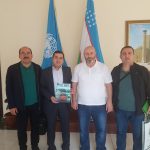
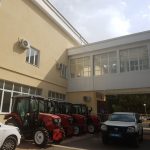
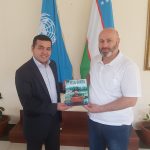
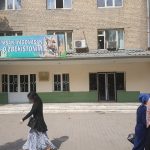
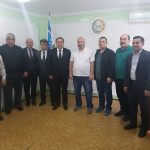
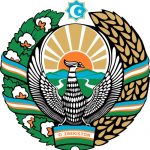
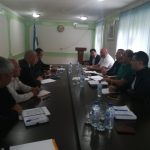
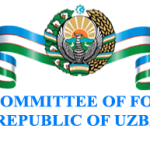
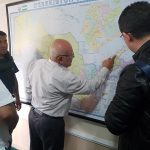

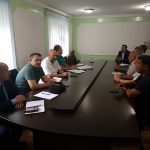
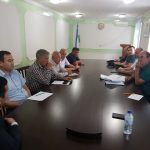
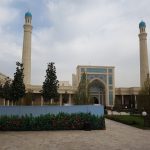
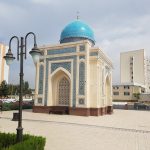
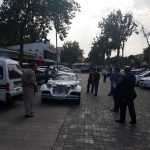
2 Responses to BODAR Özbekistan Orman Bakanına (Devlet Orman Komitesi Başkanı) sunuldu-23 Eylül 2019